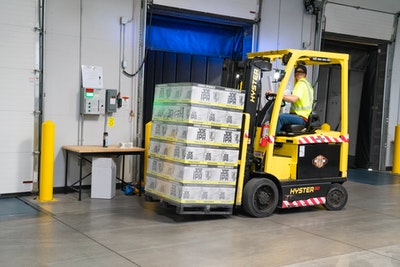What to Remember When Handling Fleet Management in Your Business
As people are encouraged, if not forced, to stay inside their homes during this pandemic, it’s becoming more evident how vital delivery services are.
If your business is involved in anything that requires your employees to be on the road constantly, you need to familiarize yourself with fleet management.
This allows you to monitor your business vehicles wherever you are. Fleet management guarantees that all your cars are accounted for.
However, it’s no secret that this innovative solution will also come with a few problems.
That’s why it’s essential to know how to maximize its potentials, and this article will help you with that.
7 Tips in Managing Fleet Vehicles
Fleet management involves complex operations to ensure that it’s working for your business.
If you ignore it, you might encounter problems that would cost your business a considerable amount of money.
We want to prevent that from happening, and here are some tips to help you manage fleet vehicles.
1. Develop a Program
The first thing you need to do is to sit down with your team and develop a program. This includes evaluating and optimizing vehicles and how you’re supposed to track them.
Moreover, the fleet program should also have the budget necessary to buy the cars, the cost of maintenance, employee training, and other expenses such as incorporating the services of a third-party organization. When it comes to purchasing the vehicles, if you’re looking for trucks, for instance, search online to See Fleet Trucks for sale near me in order to find suitable options.
Without this program, it would be harder to integrate fleet management into your business, let alone start it.
2. Keep Records
Make sure that you have all the data you need before and while you manage your fleet vehicles. This information is essential in making necessary changes whenever they are deemed necessary.
This will also indicate the effectiveness of fleet management and keep your driver’s safe while on the road. Records that must be kept include the vehicles’ condition after purchase and the condition before and after an employee uses it.
Keeping track of the vehicles’ mileage will also inform you whether you need to conduct regular maintenance. The routes of the cars should also be recorded to monitor any discrepancies.
3. Use Software
The integration of fleet management into your business will not be possible without software. There are lots of different fleet management software programs out there, and it’s up to you to determine what works with your budget and for your business.
For instance, IoT (the Internet of Things) has grown a lot over the years, with businesses becoming more connected to help streamline operations. This is why Iot fleet management, for instance, may be the best choice for transport businesses on multiple levels.
A good measure to find the best software is to contact different software providers and ask them to conduct a demonstration with your company for a possible partnership.
Once you have collected the information about these providers’ software programs, choose the best one that suits your business needs.
4. Qualified Drivers
The efficiency of your fleet management program will heavily be dependent on your drivers.
That’s why you must hire qualified vehicle operators. Besides having a professional driver’s license, ensure that your drivers are also filtered through a physical and mental health check, drug and alcohol screening, driving record, and experience.
This will guarantee that you have little to no problems regarding driver behaviors while executing your fleet management program.
5. Training
Whether the drivers you hired are experienced, it would still be for good measure if you provide training to them. This includes driving on challenging roads, avoiding hazards, and taking care of the vehicle.
Having a model kit for diesel engines would help them understand the inner workings of their car and make necessary fixes on their own when they encounter problems while in transit.
Make sure that your drivers also understand the safety rules of the road. Your drivers represent your company, and how they function on the road will reflect on your business.
6. Vehicle Maintenance
Do not forget to conduct regular maintenance on your vehicles as well.
There’s no point investing in fleet management if your cars are in poor condition in the first place. Building a partnership with your dealer will ensure that your vehicles are properly maintained.
You might also want to train your drivers to conduct an all-around safety check with their cars before they hit the road. This will guarantee that they don’t encounter accidents while driving.
7. Fleet Insurance
One notable advantage of using fleet management programs in your business is that there are various insurance policies that you could apply for.
Be sure to contact multiple insurance providers and inquire about their policies and how you can incorporate your business fleet into your coverage.
Managing a business is quite tricky. Thankfully, we have various programs that can make it a bit easier for us. If your company involves using vehicles to deliver products or services, make sure that you know how to use fleet management programs to your advantage.






